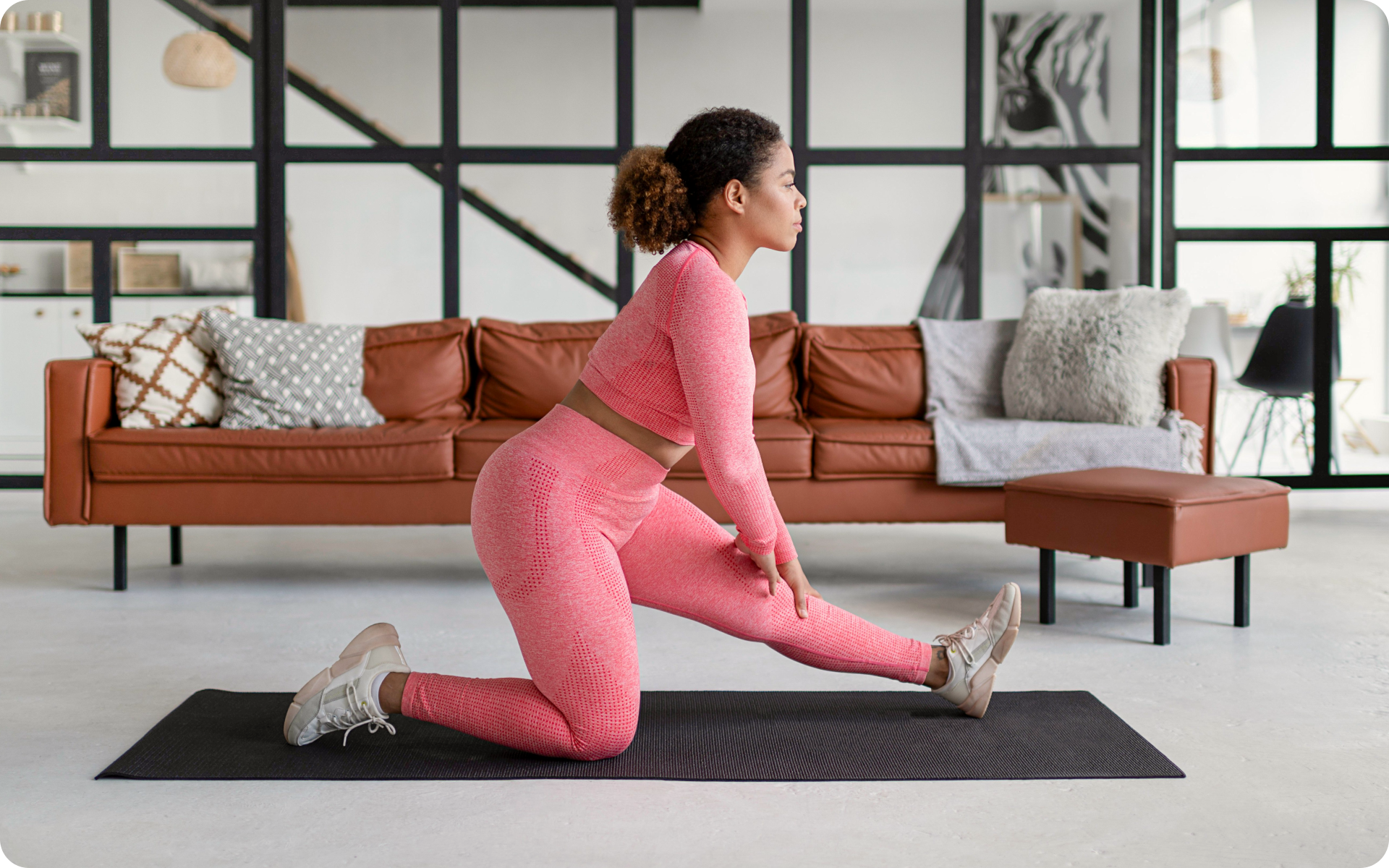Tai Chi is not a new thing. This form of workout/meditation has been used by the Chinese since as far back as the 12th century. It is not entirely a form of meditation as it is also a form of self-defence training. It is slower compared to other types of martial arts and its effectiveness hinges on deep breathing. That is why a lot of people see it as a form of meditation. Tai chi delivers a slew of health benefits, which are highlighted later in the article.
Tai chi is based on martial arts. It involves slow movements and deep breaths. When translated to english it means, ‘supreme ultimate fist’. Tai Chi is most of the time described as meditation in motion. It is a low-impact, slow motion exercising technique that requires you to go through a series of motions without pausing. When you are doing these moves as you’re breathing deeply, you are supposed to clear out your thoughts and focus your attention on your body and the way it feels in the moment.
What Is The Idea Behind Tai Chi
Tai chi in simple terms is a sequence of hand and leg movements. This mind-body exercise targets all the major muscles groups through different movements involved. People usually undertake tai chi for self-defense, as a way to boost their fitness, and also as a way to meditate and purge their bodies of stress and piled up negativity. The Chinese used it to bring opposing yin and yang elements of the world into peace, harmony and balance (7). Tai chi achieves this by bringing opposing yet complementary movements together.
Although it is said to be very slow, tai chi combines low stances with explosive power movements. Hence Tai chi is a Chinese martial art that combines deep breathing with a series of slow, graceful movements meant to improve the flow of qi. Qi is the energy that moves throughout the body.
Something tells us you often forget to put all the everyday hustle and bustle on hold and simply concentrate on yourself. It’s time to straighten out your priorities! Take a moment to heal, process your emotions, ground yourself, release all the pent-up tension and recharge with the BetterMe: Mental Health app before getting back into the race of life!
The Characteristics Of Tai Chi
- It involves circular movements
- The movements are never forced
- Muscles are usually relaxed when doing tai chi
- Joints are usually not fully extended or bent
- Connective tissues are not stretched
Benefits Of Tai Chi
There are numerous benefits associated with tai chi. This is why more and more people are getting into tai chi in the first place. The idea that tai chi is only meant for old people is nothing more than a major misconception. This centuries-old form of exercise offers both physical and mental benefits as shown below.
Helps Reduce Stress
There is always something to stress about. School can be stressing, work, relationships and many other things. Stress is not beneficial to you and your body hence you should work to reduce the amount of stressing you go through. A good way of doing this is by practicing tai chi. Tai chi emphasizes on the connection between your body and your mind. This helps one develop a better and deeper understanding of themselves. This can ultimately lead to feelings of well-being and peace. Tai chi is known to also reduce physical symptoms of stress. This is to say it can lower your heart rate, your blood pressure and levels of stress hormones like adrenaline and cortisol (3).
A study was done in 2018 to discover the effects of tai chi on stress-related anxiety. Tai chi was compared to traditional forms of exercise in this study and the effects of each on stress-related anxiety. Fifty individuals took part in this study. When the results came in, they showed that tai chi provided similar advantages for managing stress-related anxiety as normal exercises did. Another thing that makes tai chi a good stress reliever is how it includes meditation and focused deep breathing. If you find yourself stressed, tai chi is a good thing to try. The fact that there are so many videos and publications on tai chi makes it a very accessible stress reliever (3).
Helps Improve Your Mood
This is known to work for people who are very anxious or even depressed. Doing tai chi on a regular basis can reduce the symptoms associated with depression. The slow movements and the deep focused breathing are said to have a positive impact on one’s nervous system and also the hormones responsible for regulating your mood.
Helps Improve Your Quality Of Sleep
Sleep is very important. On average a human being needs around eight hours of sleep to be healthy. Tai chi is said to make a person sleep better. If you find yourself suffering from insomnia, tai chi is the way to go. Several studies have been done to prove that tai chi actually helps in improving the quality of sleep.
A study done in 2017 showed that tai chi improved the quality of sleep in women recovering from breast cancer (10).
Another study done in 2016, found that tai chi leads to better sleep in old adults. Two months of two weekly tai chi classes improved the quality of sleep of the old adults in the study (3).
Another study that was focused on young adults was able to come up with the same conclusion. This study took ten weeks and the participants were to do two tai chi lessons every week. The people who did tai chi experienced better sleep compared to those in the control group (3).
Read More: Meditation For Insomnia: Best Techniques To Ensure A Good Night’s Sleep
Reduces The Risk Of Falling In Old People
Tai chi is known to improve balance (13). Increased balance helps reduce falling in the enderly.
Helps Increase Your Strength And Flexibility
Tai chi is known to work so many muscles in your body at once (11, 9). It even works muscles that are usually left behind when trying other types of exercises. This helps increase the strength. Also, the deep slow movements help work and push your muscles. Flexibility is attained through the numerous movements, these movements increase your range of motion and make your muscle more pliable.
Helps Improve Symptoms Associated With Fibromyalgia
Fibromyalgia is a disorder characterized by widespread musculoskeletal pain accompanied by fatigue, sleep, memory, and mood issues. Tai chi is known to reduce some symptoms associated with this disease making it manageable (2).
A study in 2018 was done to show if this is actually the case. The results showed that participants who did tai chi for 52 weeks showed improvements in symptoms related to this disease compared to individuals who practiced aerobics during that time period (3).
Reduces Pain From Arthritis
Arthritis is the swelling and tenderness of one or more of your joints. Tai chi is known to reduce the pain associated with arthritis. Several studies have been done on this.
A study was conducted on individuals who had rheumatoid arthritis in 2010. The individuals did 12 weeks of tai chi. The results showed the individuals reported less pain and showed considerable improvements in their mobility and balance (3).
Another study was conducted on forty individuals with knee osteoarthritis. The individuals were to do an hour of tai chi, twice a week for 12 weeks. After the time period had elapsed, the individuals reported a decline in the pain associated with their arthritis (3).
Before you try tai chi to help with your arthritis, it is advisable to consult an expert as they will direct you better with the vast knowledge they have.
Helps Reduce Hypertension
As we have said before, tai chi involves a series of slow controlled movements. These slow, controlled movements have a positive impact on hypertension (1). A study done in 2017 showed that older adults who practiced tai chi for 45 minutes five times per week showed significant reductions in blood pressure and waist circumference. Blood pressure and waist circumference are both risk factors for heart disease. This is another reason you should practice these chinese martial arts.
Different Styles Of Tai Chi
There are different styles of tai chi a person can try. The different styles differ in their methods, in their principles, in their lineage and in their date of origin. Here are the different styles (6):
Yang-style was started in the period between 1799 and 1872. This style of tai chi focuses on slow, graceful movements and relaxation. Yang style is a good starting point for beginners (3).
Wu-style was started in the period between 1870 and 1942. Wu style tai chi focuses on micro-movements. This particular style of tai chi is practiced very slowly (3).
Chen-style was started in the period between 1580 and 1660. Chen style tai chi uses both slow and fast movements. This style of tai chi is not recommended for beginners. It is recommended for more experienced people (3).
Sun-style was started in the period between 1861 and 1932. Sun style tai chi is very similar to Chen style. Sun style involves less crouching, kicking, and punching, making it less physically demanding (3).
Wu- or Wu (Hao)-style was started in the period between 1812 and 1880. Hao style tai chi is a lesser-known and rarely practiced style. This style of tai chi is defined by a focus on your pose and internal strength (3).
If you wish to reach into the deep crevices of your mind, take yourself out of the mental loop, regain balance, infuse yourself with optimism, and cultivate compassion – The BetterMe: Mental Health app is exactly what you need!
Tai Chi for Weight Loss
There are different tai chi exercises for weight loss you can try if you want to lose weight. It is hard to believe that tai chi in its slow nature can actually help reduce weight.
Before we go too far, we need to see what science says about this. A study on the effects of tai chi and walking exercises on weight loss was conducted. The study was carried on 374 participants who were divided into three groups. The first group was to do tai chi for 45 minutes a day for the 12 weeks of the study. The second group was to do self paced walking for 45 minutes everyday for the same time period of 12 weeks. The third group was the control group (4).
The Results
After the 12 weeks, the people who practiced tai chi and walking exercises had some changes in their bodies compared to the control group. When it comes to weight loss, the individuals who practiced 45 minutes of tai chi were able to lose an average of 0.50 kgs of body weight and 0.47kgs of fat mass. The walking group was able to lose an average of 0.76kgs of body weight and 0.59kgs of fat mass. These results show tai chi does help people lose weight. There were also changes in their waist circumference. Tai chi people lost -3.7cm compared to the control group and the walking group lost -4.1cm compared to the control group (4).
Read More: Yoga Poses For Weight Loss: Get In Shape And Lose Belly Fat With These Simple Asanas
Tai Chi Weight Loss: How Does Tai Chi Help You Shed Pounds
There are different ways in which tai chi can help you lose weight. These are:
It Is A Calorie Burner (8)
As slow as tai chi may seem, it actually does help you burn calories. This is through the series of movements involved in tai chi. How many calories can one burn from tai chi? On average, doing tai chi for fifteen minutes will enable one to lose 70 calories. If you are a 155 pound person, doing thirty minutes of tai chi will enable you to lose 150 calories. If you were to practice tai chi daily for longer periods of time, you would actually lose a lot of calories. This does, however, need to be paired up with a caloric deficit. Exercising plus dieting is a proven way to lose weight.
It Is A Stress Reliever (12)
Stress is associated with weight gain. According to a study on obesity that was done in 2007, researchers followed healthy female volunteers and monitored stress levels, eating patterns and weight. High stress levels were directly related to overeating and weight gain. This goes to show that reducing the amount of stress you experience would lead to positive changes and potential weight loss.
As we discussed earlier, tai chi is a great stress reliever that lowers a person’s heart rate, blood pressure and levels of stress hormones like adrenaline and cortisol. Hence this is a good way to deal with stress which will ultimately lead to weight loss.
Tai Chi Exercises For Weight Loss
In the past, compared to other forms of exercise, it was hard to find places that give tai chi lessons. All this is becoming a thing of the past with the way people are embracing tai chi nowadays. Before you do any tai chi exercises, it is important to consult an expert. It is even better to do tai chi under the guidance of an instructor. With that said, here are two tai chi lessons you can try at home (5):
Rise And Sink
This tai chi exercise is similar to a squat, and most people know how to do a squat.
To do it you (5):
- Raise and sink your upper body alternatively.
- Stand with your feet wide apart. In a wavy motion of your hands, sink your hands. As you do this, sink your body as well, and bend at the knees.
- Breathe in. When you are breathing out, bring your hands back up, and raise your body back to the starting position.
You should do this exercise 10-15 times if you are new to tai chi.
Tai Chi Mountain Pose
This exercise is similar to the Yoga asana – Mountain pose.
To do it you (5):
- Stand with your feet apart. Slowly move your hands up, on the top of your head, while keeping them fully extended. Join them. Make sure to breathe in as you do this.
- Bring your hands down to your chest, and breathe out. As soon as you do that, raise them back up, and repeat.
It is important to make sure that as you take your hands up, you straighten your knees, and as you bring your hands down, you bend a little in your knees.
DISCLAIMER:
This article is intended for general informational purposes only and does not address individual circumstances. It is not a substitute for professional advice or help and should not be relied on to make decisions of any kind. A licensed physician should be consulted for diagnosis and treatment of any medical conditions. Any action you take upon the information presented in this article is strictly at your own risk and responsibility!
SOURCES:
- 4 Compelling Reasons to Try Tai Chi (2018, myfitnesspal.com)
- 10 Benefits of Tai Chi That Will Surprise You (n.d., lifehack.org)
- 11 Ways Tai Chi Can Benefit Your Health (2018, healthline.com)
- Effects of Tai Chi and Walking Exercises on Weight Loss, Metabolic Syndrome Parameters, and Bone Mineral Density: A Cluster Randomized Controlled Trial (2015, ncbi.nlm.nih.gov)
- Exercise for weight loss: What is Tai Chi? Here is how you can do the heart-strengthening workout at home (2020, timesnownews.com)
- How to Do Tai Chi (2019, healthline.com)
- How You Can Use Tai Chi to Get Even Stronger (2019, menshealth.com)
- Learn Tai Chi and Lose Weight (n.d., fitday.com)
- Tai chi as a form of exercise and its health benefits – Calmer mind, reduced stress and weight loss (2019, timesnownews.com)
- Tai Chi Benefits: Stress Relief, Weight Loss and More (2018, livestrong.com)
- Tai Chi – Exercises & Health Benefits (n.d, daocloud.com)
- Weight Loss Benefits of Tai Chi (n.d., healthfully.com)
- What are the health benefits of tai chi? (2018, medicalnewstoday.com)
















